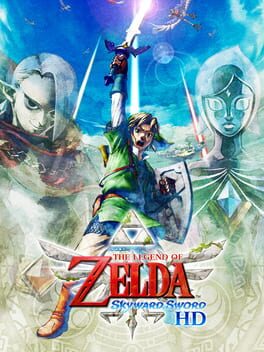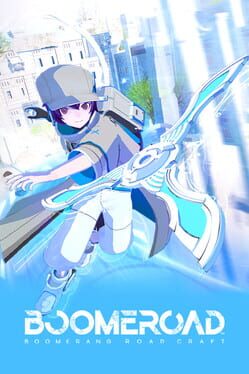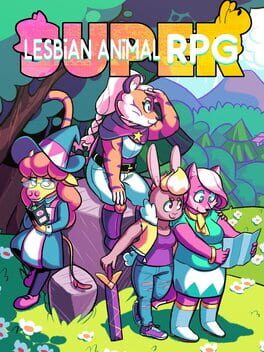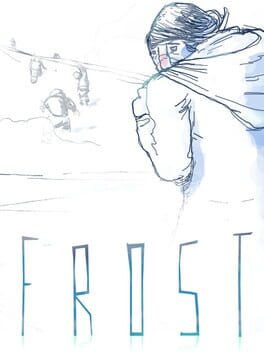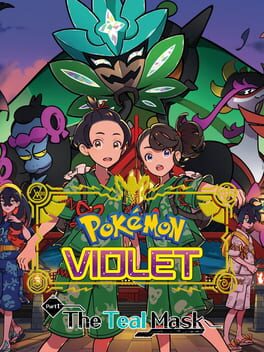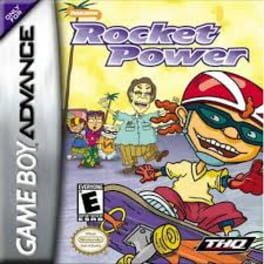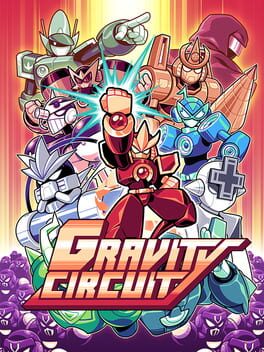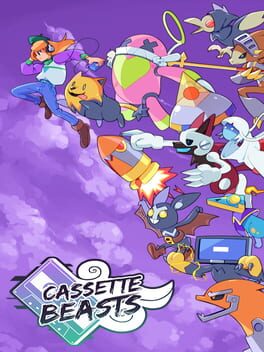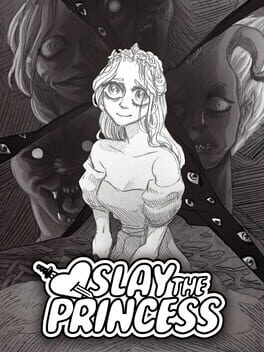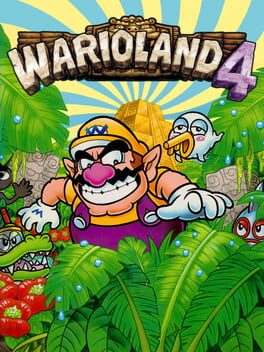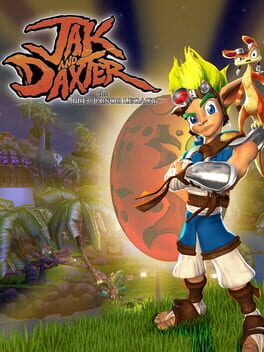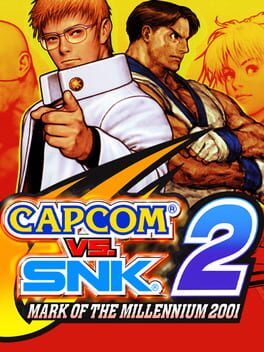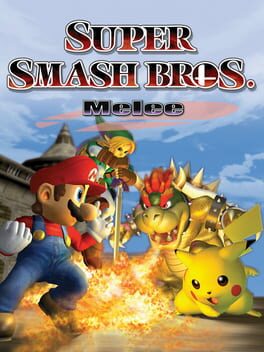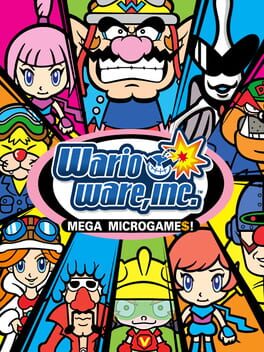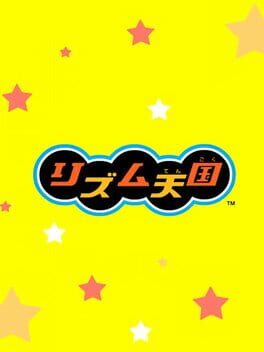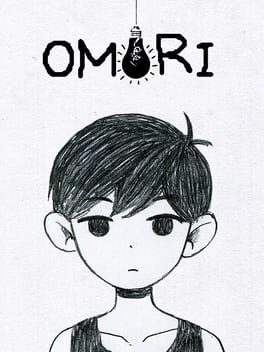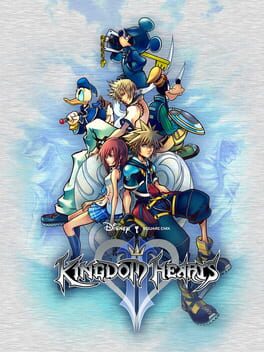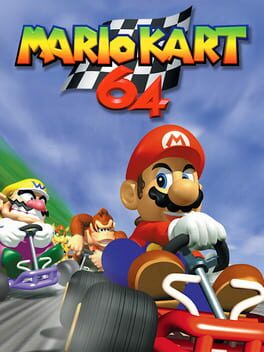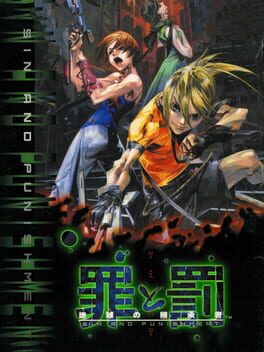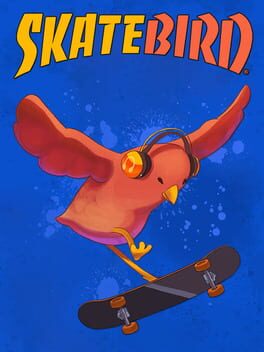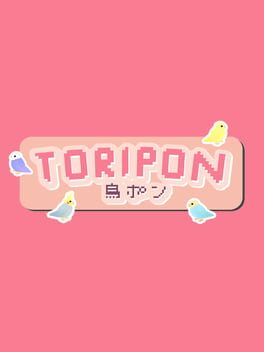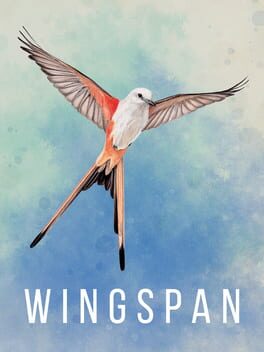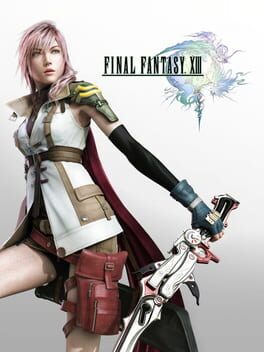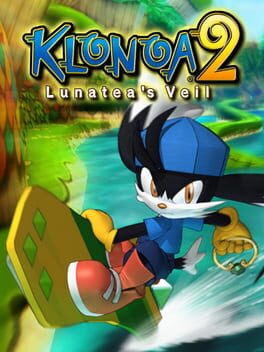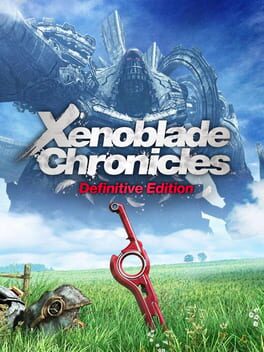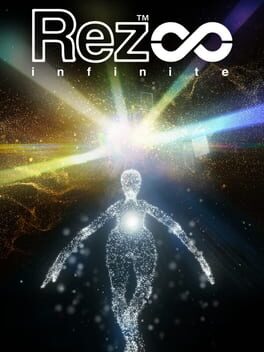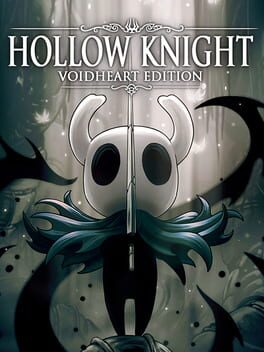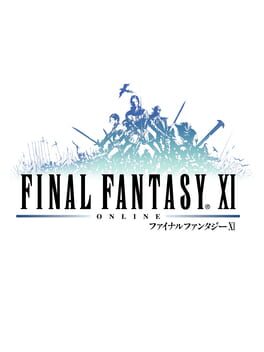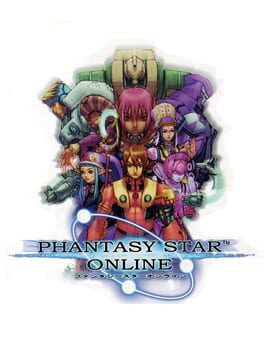KenzieUmbreon
29 reviews liked by KenzieUmbreon
I've been thinking for a long time what grade this Zelda deserves and realized that it can't jump above 3, and 2.5 is too low for it.
Even despite the minor QoL in the remaster after a whole 10 years this game still feels weird. Let's start with the worst part, which is the controls. The idea of playing as Link by controlling his abilities with your own hands felt amazing and desirable, but the implementation was lame, so much so that in 2011 you even had to use Wiimote+ for better responsiveness. But even the motion in the joycons of the Switch couldn't cope and I had to recalibrate the sensor every damn time.
This results in a deplorable feature, the registration of movements is difficult, because of this it is sometimes unpleasant to hit enemies, and after all it is a significant part of gameplay. The AI of the enemies also leaves much to be desired, although in the beginning you are convinced that the procedure of stupid jamming will not help you, but after getting Neiru's flame the game becomes too easy, everyone dies very quickly except for the fat bokoblin with a shield. It's depressing.
The game has pretty stupid backtracking, because of which you have to fly slowly on a bird to the old locations every time, but why, if you could just make a teleporter?
The quests in the game are worked out pretty well, or at least steadily provoke to explore the locations and interact with the joycons. However, it is worth noting the ultimate pointlessness of this activity, because you are given not rupees, not pieces of hearts, and idiotic crystals of happiness , which you exchange for rupees and increase inventory. Why were there various rewards for skulltula in Ocarina of Time, and this was almost 15 years before Skyward? It's not clear. However, the fact remains that the rewards for good quests are retarded.
The hub, which contains everything from shields and arrows to potions and the warehouse - are not needed almost the whole game, after 10 hours / after buying the last of the three shields you can basically forget about its existence except for a couple of quests and if you only need potions, although the game is so casual that you can live without them, especially there are fairies. Only Biddle on the chopper will make any sense the entire game, gifting you with inventory slots and badges that further ocassualize the gameplay.
Now what to praise for:
- As always, the soundtrack is gorgeous
- Despite the chamber-like nature of the locations - they're fun to explore, especially the first two locations
- One of the best storylines in the series in my humble opinion, standing next to Twilight Princess and Botva
- Visual style - interesting, you can put it in the pluses as well
- Sometimes the motion still gives you a bit of fun
- Some of the best dungeons in the series, this is where they put everything they have into it
I would recommend playing this Zelda only when you've played ALL the significant Zeldas from Link to the Past to Botw.
Even despite the minor QoL in the remaster after a whole 10 years this game still feels weird. Let's start with the worst part, which is the controls. The idea of playing as Link by controlling his abilities with your own hands felt amazing and desirable, but the implementation was lame, so much so that in 2011 you even had to use Wiimote+ for better responsiveness. But even the motion in the joycons of the Switch couldn't cope and I had to recalibrate the sensor every damn time.
This results in a deplorable feature, the registration of movements is difficult, because of this it is sometimes unpleasant to hit enemies, and after all it is a significant part of gameplay. The AI of the enemies also leaves much to be desired, although in the beginning you are convinced that the procedure of stupid jamming will not help you, but after getting Neiru's flame the game becomes too easy, everyone dies very quickly except for the fat bokoblin with a shield. It's depressing.
The game has pretty stupid backtracking, because of which you have to fly slowly on a bird to the old locations every time, but why, if you could just make a teleporter?
The quests in the game are worked out pretty well, or at least steadily provoke to explore the locations and interact with the joycons. However, it is worth noting the ultimate pointlessness of this activity, because you are given not rupees, not pieces of hearts, and idiotic crystals of happiness , which you exchange for rupees and increase inventory. Why were there various rewards for skulltula in Ocarina of Time, and this was almost 15 years before Skyward? It's not clear. However, the fact remains that the rewards for good quests are retarded.
The hub, which contains everything from shields and arrows to potions and the warehouse - are not needed almost the whole game, after 10 hours / after buying the last of the three shields you can basically forget about its existence except for a couple of quests and if you only need potions, although the game is so casual that you can live without them, especially there are fairies. Only Biddle on the chopper will make any sense the entire game, gifting you with inventory slots and badges that further ocassualize the gameplay.
Now what to praise for:
- As always, the soundtrack is gorgeous
- Despite the chamber-like nature of the locations - they're fun to explore, especially the first two locations
- One of the best storylines in the series in my humble opinion, standing next to Twilight Princess and Botva
- Visual style - interesting, you can put it in the pluses as well
- Sometimes the motion still gives you a bit of fun
- Some of the best dungeons in the series, this is where they put everything they have into it
I would recommend playing this Zelda only when you've played ALL the significant Zeldas from Link to the Past to Botw.
I’ll confess: I’ve never beaten a single Zelda game in my life. Sure, I grew up a Nintendo kid playing almost nothing but Mario and Pokemon, but for some reason I never really felt enticed to give Nintendo’s most critically acclaimed series a serious shot. I’ve tried out the opening hours of Wind Waker (something that I desperately need to finish one of these days) and have played plenty of scattered hours of Ocarina of Time at a friend’s house, and yet it wasn’t enough considering the series has eluded me until now. So, it felt like a solid challenge to cap off 2023, given my recent run with time loop adventure games… and that poyfuh recommended the game to me over a year ago. It took a while to muster up the commitment, but I finally got there! Feel free to take my readings here with a grain of salt given my lack of nostalgia for Zelda, but hopefully I can bring something different to the table by focusing on what impact it had upon a relative newcomer.
For lack of better words, The Legend of Zelda is an adventure game series. Maybe the adventure game series. Quite a few good friends and users I closely follow have commented about how Zelda is really a mish-mosh of different genres, which in essence forms the adventure game. Innuendo Studios has defined this as “games that tell stories using puzzles,” though this is a very loose definition as both narratives and puzzles take many different forms. Essentially, the genre has become a blanket term that has come to incorporate many different types of games. Zelda, as the platonic encapsulation of adventure games, has as a result, come to include many different types of genre-specific gameplay in one cohesive product. To sum this up, here’s a bit that I’ve jokingly brought up with friends: every game is basically Zelda, because Zelda is basically every game.
What I’m trying to say here, is that Majora’s Mask, much like the rest of Zelda, is not so much about any one single game mechanic so much as the coalescence of them all. No one particular element is going to stand out as exceptional because many games before and after have surpassed them, but the whole is certainly greater than the sum of its parts. Much like how a classic adventure game is a fusion of different game mechanics, Majora’s Mask focuses on the intersection of different narratives and activities to evoke “the adventurer’s spirit.” It’s very easy to be critical of specific mechanics and ideas presented within the game in isolation (and I absolutely will be due to my point of reference), but they nevertheless come together to create a game unlike any other.
I suppose the easiest way to explain the premise of Majora’s Mask is to describe it as a cross between a metroidvania (item/ability gating) and a mystroidvania (knowledge gating). The time loop facilitates both of these aspects: as Link repeats the three-day cycle to gather information regarding Termina’s workings, he also gains new key items (both classic Zelda tools like the Hookshot and masks to wear/transform), learns new songs for his ocarina, and gains access to new areas and allies that can further aid his progress. The pressing issue then, is that Majora’s Mask doesn’t fully lean into the strengths of either genre.
Majora’s Mask feels underwhelming when compared to traditional metroidvanias, because key items feel underutilized. Much of this is due to the lock-and-key nature of the puzzles. Classic Zelda games focused on items with multiple facets via both dealing damage in fights and traversal/exploration: one classic example is the hookshot, which can let Link grapple up towards wooden surfaces/chests while also acting as a ranged weapon capable of pulling items and enemies towards him. However, Majora’s Mask focuses on the collection of masks as the vast majority of key items, and most are used for one exact situation (i.e. Don Gero’s mask lets you talk to frogs) and nothing else. Additionally, the masks aren’t very balanced in terms of utility, as some masks are useless once obtained (i.e. the Troupe Leader’s mask) while some are so conventionally strong that you’ll be constantly relying upon them (i.e. the Bunny Hood increases Link’s running speed and agility, so it’s a godsend for general traversal and boss fights).
On the other hand, Majora’s Mask also feels a little lacking as a mystroidvania, because there’s relatively little observation involved when compared to similar titles. The Bomber’s Notebook is your main tool is your main tool to keep track of everyone’s schedules across the three-day time loop, but it’s a bit limited in scope. There’s only twenty inhabitants recorded with schedules, and of those twenty, at least a fourth of them can be stamped as resolved by simply speaking to them once at the right time with the right item/mask. In fact, there’s only two side-questlines that force Link to commit to strict and specific time limits across the three-day cycle (Kafei and the main Romani Ranch quest). As a result, completing the Bomber’s Notebook is surprisingly straightforward, and usually doesn’t require more than one iteration of the time loop to follow and solve each case, given that Link has the appropriate items on hand when necessary.
That's not to say that the time loop is a net negative in the scope of Majora’s Mask, but rather that in comparison to other time loop games since then, it doesn’t capitalize as much in its execution. For example, there is very little usage of the time loop in regards to its four main dungeons. As Scamsley has pointed out, the presence of a time loop should lend naturally to speedrunning (via both knowledge gating to clear the dungeon faster with skips and ability-gating to use obtained items for shortcuts), but this is more or less made redundant by beating the dungeon’s boss, as the game is content giving you a direct teleport to refight dungeon bosses in subsequent resets instead. Additionally, almost all of the time-sensitive content is located within Clock Town; while it’s quite satisfying figuring out how schedules play out in the main hub, it feels like a squandered opportunity to not include enough specifically timed events elsewhere to fully utilize the three-day cycle. The presence of owl statues throughout the map sort of speaks to this; rather than have the player spend time traversing on foot and potentially stumble upon other time sensitive events, the developers would prefer for players to jump to whatever destinations they had in mind as to avoid wasting time in areas where these time-sensitive quests didn’t exist.
On top of all of this is a general clunkiness that exists between many of the game’s various systems. There’s just enough quality-of-life to where the game feels thoughtful for its time, but also plenty of wasted time here and there that made me wonder if the developers could have gone a little further. The sheer number of key items in the menu is a huge culprit; with only three key item slots accessible at any time (and the ocarina/three transformation masks constantly taking up slots), the player is constantly roaming through the four menu screens to select the appropriate item for each situation, and it’s made worse because most items are used once and then immediately replaced as a stream of inventory puzzles. There’s also a ton of downtime from having to watch the same cutscenes over and over even if you’ve seen them in previous loops, and from being subjected to the same non-skippable Song of Soaring animation every time you teleport to an owl statue. At the very least, you can skip the mask transformations once viewed for the first time. Parsing through the three-day cycle can also be a bit annoying; the Song of Double Time does at least let you skip a full twelve hours ahead to the start of each day/night cycle, but oftentimes the timed events in question begin at midnight or midday, meaning that you’ll have to wait around for a few in-game hours since the Song of Double Time plants you at 6 AM/PM. Finally, I think it’s an interesting idea resetting the player’s rupee and general ammo count (i.e. bombs, arrows, Deku Nuts, etc) with each new loop while allowing the player to farm pre-existing Rupee chests that have been opened in previous cycles. However, while there is a bank that allows the player to store Rupees between loops, there’s no item storage facility to stockpile ammo between loops, meaning that the player will likely spend a few minutes at the start of each loop whacking bushes and enemies for basic resources (or at least eat into the player’s account to buy supplies at shops, if they don’t spend time farming chests for the Rupees instead).
Honestly, this is just the tip of the iceberg when trying to judge Majora’s Mask against today’s standards of what we consider a “good” adventure game. I do have other scattered complaints, such as boss fights being generally underwhelming (I might have legitimately spent more time fighting dungeon mini-bosses than the four main masked bosses themselves), certain tedious side-games like the RNG-heavy Dampé grave digging or the Goron race with rubber-banding AI, a few overused mini-bosses such as having to fight Wizzrobe six different times, and how outside of the Stone Temple, mask abilities are never satisfyingly blended together in puzzles/quests. The cherry on top of all this is the presence of the Stone Mask, which I’d say is a bit too good since it lets you completely ignore most dungeon enemies. That in itself made me question the quality of that one forced stealth section in Great Bay; if the optimal solution is to wear a mask which lets you outright ignore the entire system, then should it even exist? Even from the perspective of someone who’s never cleared a Zelda game before, I find myself nodding in agreement when others claim that Majora’s Mask shows its age a bit more than Ocarina of Time.
But that’s not really why we play Zelda games, right? Despite the clunkiness of some mechanics and the many areas of potential improvement, many of us are willing to sit through and accept these flaws because the general experience is the selling point. The obvious argument to be made is that while plenty of MM’s mechanics feel undercooked, the actual mechanism of gameplay is constantly shifting about to suit the specific context. In a sense, Majora’s Mask can be viewed as an antecedent to the modern possession game: the basic control scheme remains the same regardless of the mask worn, but the functionality of the basic control scheme differs. This allows the game to stick to a grounded and consistent formula even though Link’s toolkit is constantly evolving on the fly, and while there are occasional moments of jank from certain side-games, most are over in a flash and still contribute positively towards the final goal of gaining enough knowledge and utility to prevent the impending crisis.
Essentially, many of the previously mentioned shortcomings end up inverting in on themselves. While Majora’s Mask has plenty of rough edges due to its rushed development and heavy re-use of assets, it’s these rough edges that lend so much towards its personality. I love how absolutely absurd and deranged the writing becomes, and the adventure game structure lets Majora’s Mask take complete advantage of the situation. One minute you’re tracking down a circus performer so he can spill his life story about joining an animal troupe since humans are also animals, then the next minute you’re fending off these zombie lantern alien ghosts with searchlight eyes so they don’t kidnap your new friend and her cows before the sun rises. The seeming lack of focus with the constant barrage of minigames and side-quests keeps the player constantly guessing what the next twist of events will bring, and the game is more than happy to ask rather than answer questions.
The backing time loop connecting all of these events together is really what drives the message home. Even though it’s absolutely tedious having to watch the same cutscenes over and over again, nothing illustrates the plight of Termina more starkly than forcing players to endlessly relive the day’s events and realizing that they are the only chance this world stands at reaching a new timeline. The ending credits bring such a gratifying emotional rush because the game deliberately withholds any semblance of permanent catharsis until you finally break through. You can’t help everyone in a single time loop, and they will never be free of their troubles until the moon stops falling. Until then, they’ll be hopelessly repeating the same tasks three days at a time, waiting for the dawn of a new day that will never come.
At the end of the day, I could keep finding things to nitpick about Majora’s Mask, but I also can’t imagine the game without these shortcomings since they form an integral part of the game’s identity. The masks might be glorified gimmicks, but they’re fantastic symbolism that are forever carried with you upon your journey even as time is constantly erased, and ultimately strengthen the adventure game aspect by assigning you new tasks to peruse. The time loop might not be fully utilized outside of Clock Town and contain extended gaps of waiting to get to important events, but it’s the forced repetition of the three-day cycle’s events that enforces the gravity of the situation upon the player. Individual characters aside from Skull Kid might not have the fleshed-out backgrounds that I had hoped for, but it’s a non-issue when Majora’s Mask is ultimately the story of Termina itself, formed from the intersecting schedules of all the different characters and elements at play. Separately, I think all of these elements are easily picked apart, but meshed together, they contribute to this pervasive nightmare of abject misery where even in the face of imminent death, fleeting moments of joy and comfort are enough to humanize the fantastical elements of Termina and keep the player moving forward towards a better future.
The story of and surrounding Majora’s Mask fascinates me, especially when learning that director Eiji Aonuma has since expressed regrets regarding its development. I and many others, however, see nothing to be ashamed of with their final product. If anything, Majora’s Mask is classic Nintendo at its core: instead of making a product that was visibly better than its competition, the developers took a chance and sought out to make something that was visibly different. The Wii is often cited as the most prevalent example of this “blue ocean strategy," though I firmly believe that Majora’s Mask was Nintendo’s first notable crack at it. Having to follow-up a game considered by many as the greatest of all time with an even shorter development period was a daunting ask, but as far I’m concerned, they absolutely succeeded. It doesn’t matter that other time loop adventure games have since outclassed their grandfather; there’s simply nothing like Majora’s Mask, and I doubt there ever will be.
For lack of better words, The Legend of Zelda is an adventure game series. Maybe the adventure game series. Quite a few good friends and users I closely follow have commented about how Zelda is really a mish-mosh of different genres, which in essence forms the adventure game. Innuendo Studios has defined this as “games that tell stories using puzzles,” though this is a very loose definition as both narratives and puzzles take many different forms. Essentially, the genre has become a blanket term that has come to incorporate many different types of games. Zelda, as the platonic encapsulation of adventure games, has as a result, come to include many different types of genre-specific gameplay in one cohesive product. To sum this up, here’s a bit that I’ve jokingly brought up with friends: every game is basically Zelda, because Zelda is basically every game.
What I’m trying to say here, is that Majora’s Mask, much like the rest of Zelda, is not so much about any one single game mechanic so much as the coalescence of them all. No one particular element is going to stand out as exceptional because many games before and after have surpassed them, but the whole is certainly greater than the sum of its parts. Much like how a classic adventure game is a fusion of different game mechanics, Majora’s Mask focuses on the intersection of different narratives and activities to evoke “the adventurer’s spirit.” It’s very easy to be critical of specific mechanics and ideas presented within the game in isolation (and I absolutely will be due to my point of reference), but they nevertheless come together to create a game unlike any other.
I suppose the easiest way to explain the premise of Majora’s Mask is to describe it as a cross between a metroidvania (item/ability gating) and a mystroidvania (knowledge gating). The time loop facilitates both of these aspects: as Link repeats the three-day cycle to gather information regarding Termina’s workings, he also gains new key items (both classic Zelda tools like the Hookshot and masks to wear/transform), learns new songs for his ocarina, and gains access to new areas and allies that can further aid his progress. The pressing issue then, is that Majora’s Mask doesn’t fully lean into the strengths of either genre.
Majora’s Mask feels underwhelming when compared to traditional metroidvanias, because key items feel underutilized. Much of this is due to the lock-and-key nature of the puzzles. Classic Zelda games focused on items with multiple facets via both dealing damage in fights and traversal/exploration: one classic example is the hookshot, which can let Link grapple up towards wooden surfaces/chests while also acting as a ranged weapon capable of pulling items and enemies towards him. However, Majora’s Mask focuses on the collection of masks as the vast majority of key items, and most are used for one exact situation (i.e. Don Gero’s mask lets you talk to frogs) and nothing else. Additionally, the masks aren’t very balanced in terms of utility, as some masks are useless once obtained (i.e. the Troupe Leader’s mask) while some are so conventionally strong that you’ll be constantly relying upon them (i.e. the Bunny Hood increases Link’s running speed and agility, so it’s a godsend for general traversal and boss fights).
On the other hand, Majora’s Mask also feels a little lacking as a mystroidvania, because there’s relatively little observation involved when compared to similar titles. The Bomber’s Notebook is your main tool is your main tool to keep track of everyone’s schedules across the three-day time loop, but it’s a bit limited in scope. There’s only twenty inhabitants recorded with schedules, and of those twenty, at least a fourth of them can be stamped as resolved by simply speaking to them once at the right time with the right item/mask. In fact, there’s only two side-questlines that force Link to commit to strict and specific time limits across the three-day cycle (Kafei and the main Romani Ranch quest). As a result, completing the Bomber’s Notebook is surprisingly straightforward, and usually doesn’t require more than one iteration of the time loop to follow and solve each case, given that Link has the appropriate items on hand when necessary.
That's not to say that the time loop is a net negative in the scope of Majora’s Mask, but rather that in comparison to other time loop games since then, it doesn’t capitalize as much in its execution. For example, there is very little usage of the time loop in regards to its four main dungeons. As Scamsley has pointed out, the presence of a time loop should lend naturally to speedrunning (via both knowledge gating to clear the dungeon faster with skips and ability-gating to use obtained items for shortcuts), but this is more or less made redundant by beating the dungeon’s boss, as the game is content giving you a direct teleport to refight dungeon bosses in subsequent resets instead. Additionally, almost all of the time-sensitive content is located within Clock Town; while it’s quite satisfying figuring out how schedules play out in the main hub, it feels like a squandered opportunity to not include enough specifically timed events elsewhere to fully utilize the three-day cycle. The presence of owl statues throughout the map sort of speaks to this; rather than have the player spend time traversing on foot and potentially stumble upon other time sensitive events, the developers would prefer for players to jump to whatever destinations they had in mind as to avoid wasting time in areas where these time-sensitive quests didn’t exist.
On top of all of this is a general clunkiness that exists between many of the game’s various systems. There’s just enough quality-of-life to where the game feels thoughtful for its time, but also plenty of wasted time here and there that made me wonder if the developers could have gone a little further. The sheer number of key items in the menu is a huge culprit; with only three key item slots accessible at any time (and the ocarina/three transformation masks constantly taking up slots), the player is constantly roaming through the four menu screens to select the appropriate item for each situation, and it’s made worse because most items are used once and then immediately replaced as a stream of inventory puzzles. There’s also a ton of downtime from having to watch the same cutscenes over and over even if you’ve seen them in previous loops, and from being subjected to the same non-skippable Song of Soaring animation every time you teleport to an owl statue. At the very least, you can skip the mask transformations once viewed for the first time. Parsing through the three-day cycle can also be a bit annoying; the Song of Double Time does at least let you skip a full twelve hours ahead to the start of each day/night cycle, but oftentimes the timed events in question begin at midnight or midday, meaning that you’ll have to wait around for a few in-game hours since the Song of Double Time plants you at 6 AM/PM. Finally, I think it’s an interesting idea resetting the player’s rupee and general ammo count (i.e. bombs, arrows, Deku Nuts, etc) with each new loop while allowing the player to farm pre-existing Rupee chests that have been opened in previous cycles. However, while there is a bank that allows the player to store Rupees between loops, there’s no item storage facility to stockpile ammo between loops, meaning that the player will likely spend a few minutes at the start of each loop whacking bushes and enemies for basic resources (or at least eat into the player’s account to buy supplies at shops, if they don’t spend time farming chests for the Rupees instead).
Honestly, this is just the tip of the iceberg when trying to judge Majora’s Mask against today’s standards of what we consider a “good” adventure game. I do have other scattered complaints, such as boss fights being generally underwhelming (I might have legitimately spent more time fighting dungeon mini-bosses than the four main masked bosses themselves), certain tedious side-games like the RNG-heavy Dampé grave digging or the Goron race with rubber-banding AI, a few overused mini-bosses such as having to fight Wizzrobe six different times, and how outside of the Stone Temple, mask abilities are never satisfyingly blended together in puzzles/quests. The cherry on top of all this is the presence of the Stone Mask, which I’d say is a bit too good since it lets you completely ignore most dungeon enemies. That in itself made me question the quality of that one forced stealth section in Great Bay; if the optimal solution is to wear a mask which lets you outright ignore the entire system, then should it even exist? Even from the perspective of someone who’s never cleared a Zelda game before, I find myself nodding in agreement when others claim that Majora’s Mask shows its age a bit more than Ocarina of Time.
But that’s not really why we play Zelda games, right? Despite the clunkiness of some mechanics and the many areas of potential improvement, many of us are willing to sit through and accept these flaws because the general experience is the selling point. The obvious argument to be made is that while plenty of MM’s mechanics feel undercooked, the actual mechanism of gameplay is constantly shifting about to suit the specific context. In a sense, Majora’s Mask can be viewed as an antecedent to the modern possession game: the basic control scheme remains the same regardless of the mask worn, but the functionality of the basic control scheme differs. This allows the game to stick to a grounded and consistent formula even though Link’s toolkit is constantly evolving on the fly, and while there are occasional moments of jank from certain side-games, most are over in a flash and still contribute positively towards the final goal of gaining enough knowledge and utility to prevent the impending crisis.
Essentially, many of the previously mentioned shortcomings end up inverting in on themselves. While Majora’s Mask has plenty of rough edges due to its rushed development and heavy re-use of assets, it’s these rough edges that lend so much towards its personality. I love how absolutely absurd and deranged the writing becomes, and the adventure game structure lets Majora’s Mask take complete advantage of the situation. One minute you’re tracking down a circus performer so he can spill his life story about joining an animal troupe since humans are also animals, then the next minute you’re fending off these zombie lantern alien ghosts with searchlight eyes so they don’t kidnap your new friend and her cows before the sun rises. The seeming lack of focus with the constant barrage of minigames and side-quests keeps the player constantly guessing what the next twist of events will bring, and the game is more than happy to ask rather than answer questions.
The backing time loop connecting all of these events together is really what drives the message home. Even though it’s absolutely tedious having to watch the same cutscenes over and over again, nothing illustrates the plight of Termina more starkly than forcing players to endlessly relive the day’s events and realizing that they are the only chance this world stands at reaching a new timeline. The ending credits bring such a gratifying emotional rush because the game deliberately withholds any semblance of permanent catharsis until you finally break through. You can’t help everyone in a single time loop, and they will never be free of their troubles until the moon stops falling. Until then, they’ll be hopelessly repeating the same tasks three days at a time, waiting for the dawn of a new day that will never come.
At the end of the day, I could keep finding things to nitpick about Majora’s Mask, but I also can’t imagine the game without these shortcomings since they form an integral part of the game’s identity. The masks might be glorified gimmicks, but they’re fantastic symbolism that are forever carried with you upon your journey even as time is constantly erased, and ultimately strengthen the adventure game aspect by assigning you new tasks to peruse. The time loop might not be fully utilized outside of Clock Town and contain extended gaps of waiting to get to important events, but it’s the forced repetition of the three-day cycle’s events that enforces the gravity of the situation upon the player. Individual characters aside from Skull Kid might not have the fleshed-out backgrounds that I had hoped for, but it’s a non-issue when Majora’s Mask is ultimately the story of Termina itself, formed from the intersecting schedules of all the different characters and elements at play. Separately, I think all of these elements are easily picked apart, but meshed together, they contribute to this pervasive nightmare of abject misery where even in the face of imminent death, fleeting moments of joy and comfort are enough to humanize the fantastical elements of Termina and keep the player moving forward towards a better future.
The story of and surrounding Majora’s Mask fascinates me, especially when learning that director Eiji Aonuma has since expressed regrets regarding its development. I and many others, however, see nothing to be ashamed of with their final product. If anything, Majora’s Mask is classic Nintendo at its core: instead of making a product that was visibly better than its competition, the developers took a chance and sought out to make something that was visibly different. The Wii is often cited as the most prevalent example of this “blue ocean strategy," though I firmly believe that Majora’s Mask was Nintendo’s first notable crack at it. Having to follow-up a game considered by many as the greatest of all time with an even shorter development period was a daunting ask, but as far I’m concerned, they absolutely succeeded. It doesn’t matter that other time loop adventure games have since outclassed their grandfather; there’s simply nothing like Majora’s Mask, and I doubt there ever will be.
Journey
2012
At this point, I feel like I’ve been playing Journey for half of my life. I’ve played through underwater Journey, forest Journey, air Journey, space Journey, cat Journey, and even boring Journey. Yet upon my yearly ascent in the original Journey on New Year’s Day, I find myself just as floored as when I first picked it up years ago, in spite of clone after clone exhausting my goodwill. What exactly then, is present in the original’s realized game design philosophy that every other spiritual successor has found themselves bereft of?
To answer this question, I want you to imagine a world where Journey doesn’t exist. A world where the formula to indie developers meant something more than just mindlessly tilting up on the left joystick to walk towards the next checkpoint while some narrator waxed poetic in the background. Before Journey, before Flower even, the closest ancestor we had was Ico. Fumito Ueda described his game as an execution of “boy meets girl,” and what it boiled down to was a minimalist adventure game with some puzzles cleverly disguised as platforming and timing segments. Occasionally, you also whack a few shadows while protecting and pulling your female companion Yorda through vast and still castle ruins. It wasn’t a perfect game by any means; the combat was frankly tedious, Yorda lacked much of an identity outside of pointing at objects of interest/opening doors/getting kidnapped, and at the end of the day, there really wasn’t much in the way of a balanced and developed relationship when the player was calling all the shots, but it was still the start of something beautiful. It wasn’t mechanically complex or esoteric in any fashion, but it was different. It was different, and it felt dangerous.
This write-up is not intended to be a critique of Ico, nor is it meant to imply that games proceeding Team Ico's philosophy of “design by subtraction” have since been inferior. Rather, I bring up Ico in particular, because there seems to be this general perception that minimalism results in a crippling lack of mechanical depth. That is, many seem to believe that discarding and minimizing a game’s various elements results in a dearth of tangible mechanics or imagery to cling onto, and thus appears to result in an empty and vacuous experience with little to justify further replays or deeper dives. To me though, this line of thought fundamentally misunderstands the purpose of addition by subtraction. It was never about creating mechanically deep systems with limitless possibilities like an immersive sim or a sandbox. Rather, the philosophy aimed to remove excess layers that distracted from the game’s “more realistic feeling of presence”, such as removing optional bosses and landmarks in Shadow of the Colossus or reducing enemy types in Ico to just a single design. In fairness, the goal wasn't just to remove extraneous elements that made something feel overly “gamey,” but also to marry mechanics in a way where the invisible layer of intended design never made itself too apparent (i.e. hiding the user interface in Shadow of the Colossus outside of fights). It was not just addition by subtraction; it was also addition through illusion.
To that end, I firmly believe that Journey is the best Team Ico game that Fumito Ueda never directed. Journey’s design philosophy was not necessarily revolutionary for its time, considering its predecessors in the forms of Flower and Ico, nor was its ultimate goal of reaching a final destination via walking/jumping/flying mechanics particularly exemplary. What was exemplary was its level of care and precision in how it implemented said minimalist design philosophy. Every time I play through Journey, I pick up more subtle details through its fusion of audio-visual presentation and gameplay that seemed so clear and intuitive that I had taken their presence for granted. There are the obvious strengths, like how Journey wordlessly conveys your path forward by keeping the shining peak of the mountain visible at all times while outside, or how it uses consistent visual language through cloth creatures and strips to demarcate safe zones where the player can recharge their scarf. But there’s more beneath the surface; what about the game's sneaky introduction to the sand-sliding mechanic from the introductory dune so it’s no longer unfamiliar during the exhilarating and committal descent, or how there’s a section of the underground that’s filled with these scarf jellyfish tinted in blue allowing you to remain in flight that evokes the feeling of being underwater, foreshadowing the next section as a tower ascension where the player must continually breach the surface to “swim” and escape? Sure, everyone knows about how the bitter cold disempowers the player by slowing their movement and lowering the scarf’s energy gauge, but I usually don’t hear about how strong winds can chip away at the scarf’s capacity itself or how it reduces the volume and area of effect of your shouts, making it far more difficult to restore your energy gauge from the growing frostbite.
There’s also the overlooked audio aspect of Journey. Granted, everyone loves to discuss the soundtrack’s thematics, like how the final chord of Journey’s motif never resolves a single time in any track until the end of Apotheosis or for that matter, how all the instruments are never fully present until that final ascent, when the entire orchestra finally comes together as one only to slowly fall away as the player and the world fade away. Yet, the sound design regarding Journey’s implementation of said soundtrack often goes underappreciated. Again, there are plenty of clear strengths that have been widely discussed, such as the punctuated stillness of the desert dunes providing room for the piddle paddle of the player’s footsteps amongst the vast desert winds and eventually swelling into triumphant bursts of adventure. But again, there are little subtleties that speak to the soundtrack’s interactivity, like how the backing drum during the aforementioned underwater section gives the track the impression of being muted and seamlessly drops this filter once the player breaches the surface, or how the player’s shouts are always in the key of the backing track’s scale, meaning that the introduced notes remain within the game’s tonality. It’s these little things that further round out Journey’s experience; the music is so seamlessly woven in that it takes a discerning ear to pick out every specific detail, in such a way where it feels like the soundtrack is organically supplementing every memorable moment of the game.
Of course, it’s not enough to just handle the basics well, even if there’s a master’s touch present to carefully disguise these additions so silently. As I mentioned before, popular works need compelling hooks to draw in an audience, but they also need an element of danger to keep that audience engaged. In the case of Journey, Thatgamecompany tackles this through their stealth multiplayer. This is where Journey easily outclasses its successors and may in fact, even have one-upped Ico. If Ico’s main limitation was a lack of autonomy for any non-player characters, then Journey circumvents this problem entirely by replacing the AI with real players instead. The loose implementation adds a catch: nothing in the game aside from the final completion screen listing your companion(s)’ name(s) ever hints on this, and not once is the player given instructions or suggestions on how to interact with said players. The only obvious mechanical incentive from cooperating with other players is the ability to recharge one another’s scarves via proximity/shouts, and there’s no consequence to merely abandoning random players or quitting in the middle of a session. It’s what makes this multiplayer so compelling; many times you’ll find other players just wandering about by themselves, despawning, or quickly rushing ahead without care towards your presence. There’s no guarantee that they’ll cooperate… which makes that one instance where they do that much more memorable. In this sense, I think Jenova Chen and his team solved two problems at once: the aforementioned challenge of granting outside elements a degree of realism, and his own personal challenge of creating a minimalist environment where players had no incentives to act in bad faith despite never having any major incentives to cooperate either, resulting in seemingly organic interactions.
Perhaps it is cheating to state that this spontaneous element is what gives Journey a step-up over its peers, but I also can’t deny that this same feature is exactly what lends the game its identity. It’s hard to provide drastically different experiences for focused single player games after all; no matter how much Fumito Ueda may have insisted that he was inspired by emergent gameplay mechanics and player autonomy to allow for more diverse experiences, there remains an upper limit upon how far those experiences can unravel. However, Thatgamecompany’s take upon the “single-player odyssey” alongside the game’s cyclical nature and short runtime means that Journey is a far more replayable experience while remaining every bit as compelling as its competition. Even after multiple trips up the summit, I continue to be amazed by the thoughtfulness shown to me by other players. I can’t tell you how many times I’ve fallen down the temple from being blown away by the wind, only for my companion to jump down with me, or how many trips through the blizzard were spent slowly trudging together mashing my shout, just like strangers on a cold winter’s night huddling together for warmth while shouting cries of encouragement to take one more step forward. In essence, Journey didn't need an intricate or elaborate story told with fanciful cutscenes and voice-acting; it simply needed to provide a backbone with no other contradicting elements, allowing players to form their own stories by experiencing the game on their own terms.
Journey isn’t mechanically rich or wildly innovative in terms of its scope, but it doesn’t have to be. Rather, it’s a deceptively simple yet meticulous and thoughtfully different approach upon a respected design philosophy, which aimed to further refine said formula by whittling down any elements that detracted from the game’s constructed sense of reality. Similarly, it doesn't feel the need to present a grandiose narrative, instead stripping away any specific contextual layers as to allow players to create memorable experiences with no conflicting moments in-between. I should be sick of this formula after tackling so many misguided copycats, and I can't deny that I was afraid to label yet another old favorite as propped up by nostalgia. Thankfully, my fears have been assuaged. I keep waiting for the day where I’ll finally be content putting this down forever… but that day has yet to come. I was not the first adventurer to embark upon this pilgrimage, nor will I be the last. Maybe I just need to get over my cynicism and accept that there was never anything to be cynical of to begin with. I’m sure more developers will continue to lazily carbon copy one of my favorites until the end of time, but that doesn’t mean the good times have to end.
Thanks for reading, everyone. Happy new year, and here’s to another journey around the sun.
To answer this question, I want you to imagine a world where Journey doesn’t exist. A world where the formula to indie developers meant something more than just mindlessly tilting up on the left joystick to walk towards the next checkpoint while some narrator waxed poetic in the background. Before Journey, before Flower even, the closest ancestor we had was Ico. Fumito Ueda described his game as an execution of “boy meets girl,” and what it boiled down to was a minimalist adventure game with some puzzles cleverly disguised as platforming and timing segments. Occasionally, you also whack a few shadows while protecting and pulling your female companion Yorda through vast and still castle ruins. It wasn’t a perfect game by any means; the combat was frankly tedious, Yorda lacked much of an identity outside of pointing at objects of interest/opening doors/getting kidnapped, and at the end of the day, there really wasn’t much in the way of a balanced and developed relationship when the player was calling all the shots, but it was still the start of something beautiful. It wasn’t mechanically complex or esoteric in any fashion, but it was different. It was different, and it felt dangerous.
This write-up is not intended to be a critique of Ico, nor is it meant to imply that games proceeding Team Ico's philosophy of “design by subtraction” have since been inferior. Rather, I bring up Ico in particular, because there seems to be this general perception that minimalism results in a crippling lack of mechanical depth. That is, many seem to believe that discarding and minimizing a game’s various elements results in a dearth of tangible mechanics or imagery to cling onto, and thus appears to result in an empty and vacuous experience with little to justify further replays or deeper dives. To me though, this line of thought fundamentally misunderstands the purpose of addition by subtraction. It was never about creating mechanically deep systems with limitless possibilities like an immersive sim or a sandbox. Rather, the philosophy aimed to remove excess layers that distracted from the game’s “more realistic feeling of presence”, such as removing optional bosses and landmarks in Shadow of the Colossus or reducing enemy types in Ico to just a single design. In fairness, the goal wasn't just to remove extraneous elements that made something feel overly “gamey,” but also to marry mechanics in a way where the invisible layer of intended design never made itself too apparent (i.e. hiding the user interface in Shadow of the Colossus outside of fights). It was not just addition by subtraction; it was also addition through illusion.
To that end, I firmly believe that Journey is the best Team Ico game that Fumito Ueda never directed. Journey’s design philosophy was not necessarily revolutionary for its time, considering its predecessors in the forms of Flower and Ico, nor was its ultimate goal of reaching a final destination via walking/jumping/flying mechanics particularly exemplary. What was exemplary was its level of care and precision in how it implemented said minimalist design philosophy. Every time I play through Journey, I pick up more subtle details through its fusion of audio-visual presentation and gameplay that seemed so clear and intuitive that I had taken their presence for granted. There are the obvious strengths, like how Journey wordlessly conveys your path forward by keeping the shining peak of the mountain visible at all times while outside, or how it uses consistent visual language through cloth creatures and strips to demarcate safe zones where the player can recharge their scarf. But there’s more beneath the surface; what about the game's sneaky introduction to the sand-sliding mechanic from the introductory dune so it’s no longer unfamiliar during the exhilarating and committal descent, or how there’s a section of the underground that’s filled with these scarf jellyfish tinted in blue allowing you to remain in flight that evokes the feeling of being underwater, foreshadowing the next section as a tower ascension where the player must continually breach the surface to “swim” and escape? Sure, everyone knows about how the bitter cold disempowers the player by slowing their movement and lowering the scarf’s energy gauge, but I usually don’t hear about how strong winds can chip away at the scarf’s capacity itself or how it reduces the volume and area of effect of your shouts, making it far more difficult to restore your energy gauge from the growing frostbite.
There’s also the overlooked audio aspect of Journey. Granted, everyone loves to discuss the soundtrack’s thematics, like how the final chord of Journey’s motif never resolves a single time in any track until the end of Apotheosis or for that matter, how all the instruments are never fully present until that final ascent, when the entire orchestra finally comes together as one only to slowly fall away as the player and the world fade away. Yet, the sound design regarding Journey’s implementation of said soundtrack often goes underappreciated. Again, there are plenty of clear strengths that have been widely discussed, such as the punctuated stillness of the desert dunes providing room for the piddle paddle of the player’s footsteps amongst the vast desert winds and eventually swelling into triumphant bursts of adventure. But again, there are little subtleties that speak to the soundtrack’s interactivity, like how the backing drum during the aforementioned underwater section gives the track the impression of being muted and seamlessly drops this filter once the player breaches the surface, or how the player’s shouts are always in the key of the backing track’s scale, meaning that the introduced notes remain within the game’s tonality. It’s these little things that further round out Journey’s experience; the music is so seamlessly woven in that it takes a discerning ear to pick out every specific detail, in such a way where it feels like the soundtrack is organically supplementing every memorable moment of the game.
Of course, it’s not enough to just handle the basics well, even if there’s a master’s touch present to carefully disguise these additions so silently. As I mentioned before, popular works need compelling hooks to draw in an audience, but they also need an element of danger to keep that audience engaged. In the case of Journey, Thatgamecompany tackles this through their stealth multiplayer. This is where Journey easily outclasses its successors and may in fact, even have one-upped Ico. If Ico’s main limitation was a lack of autonomy for any non-player characters, then Journey circumvents this problem entirely by replacing the AI with real players instead. The loose implementation adds a catch: nothing in the game aside from the final completion screen listing your companion(s)’ name(s) ever hints on this, and not once is the player given instructions or suggestions on how to interact with said players. The only obvious mechanical incentive from cooperating with other players is the ability to recharge one another’s scarves via proximity/shouts, and there’s no consequence to merely abandoning random players or quitting in the middle of a session. It’s what makes this multiplayer so compelling; many times you’ll find other players just wandering about by themselves, despawning, or quickly rushing ahead without care towards your presence. There’s no guarantee that they’ll cooperate… which makes that one instance where they do that much more memorable. In this sense, I think Jenova Chen and his team solved two problems at once: the aforementioned challenge of granting outside elements a degree of realism, and his own personal challenge of creating a minimalist environment where players had no incentives to act in bad faith despite never having any major incentives to cooperate either, resulting in seemingly organic interactions.
Perhaps it is cheating to state that this spontaneous element is what gives Journey a step-up over its peers, but I also can’t deny that this same feature is exactly what lends the game its identity. It’s hard to provide drastically different experiences for focused single player games after all; no matter how much Fumito Ueda may have insisted that he was inspired by emergent gameplay mechanics and player autonomy to allow for more diverse experiences, there remains an upper limit upon how far those experiences can unravel. However, Thatgamecompany’s take upon the “single-player odyssey” alongside the game’s cyclical nature and short runtime means that Journey is a far more replayable experience while remaining every bit as compelling as its competition. Even after multiple trips up the summit, I continue to be amazed by the thoughtfulness shown to me by other players. I can’t tell you how many times I’ve fallen down the temple from being blown away by the wind, only for my companion to jump down with me, or how many trips through the blizzard were spent slowly trudging together mashing my shout, just like strangers on a cold winter’s night huddling together for warmth while shouting cries of encouragement to take one more step forward. In essence, Journey didn't need an intricate or elaborate story told with fanciful cutscenes and voice-acting; it simply needed to provide a backbone with no other contradicting elements, allowing players to form their own stories by experiencing the game on their own terms.
Journey isn’t mechanically rich or wildly innovative in terms of its scope, but it doesn’t have to be. Rather, it’s a deceptively simple yet meticulous and thoughtfully different approach upon a respected design philosophy, which aimed to further refine said formula by whittling down any elements that detracted from the game’s constructed sense of reality. Similarly, it doesn't feel the need to present a grandiose narrative, instead stripping away any specific contextual layers as to allow players to create memorable experiences with no conflicting moments in-between. I should be sick of this formula after tackling so many misguided copycats, and I can't deny that I was afraid to label yet another old favorite as propped up by nostalgia. Thankfully, my fears have been assuaged. I keep waiting for the day where I’ll finally be content putting this down forever… but that day has yet to come. I was not the first adventurer to embark upon this pilgrimage, nor will I be the last. Maybe I just need to get over my cynicism and accept that there was never anything to be cynical of to begin with. I’m sure more developers will continue to lazily carbon copy one of my favorites until the end of time, but that doesn’t mean the good times have to end.
Thanks for reading, everyone. Happy new year, and here’s to another journey around the sun.
Boomeroad
2024
Bandai-Namco released Boomeroad worldwide two days ago as part of a suite of simple and experimental games to train new recruits from their indie developer Gyaar Studio. The concept here combines a standard 3D platformer with boomerang throwing that creates grindable rails that can be chained for extended mid-air traversal. You refresh your energy gauge by passing through rings and landing on platforms, and you can increase the gauge's capacity by collecting optional artifacts. Unfortunately, the gameplay is undercooked. You can't adjust the shape of the boomerang's arc besides flattening the upward curve a little, there's very few interactable objects (switches and fans) that force the player to throw the boomerang at them for activation, and you can in fact avoid most of these elements entirely by throwing two chained boomerang arcs to climb up and walk on top of the level's walls, skipping entire sections of the level while never running out of gauge. While I thought speedrun mode would mitigate most of these shortcomings, I don't find the movement satisfying enough because there's fairly little momentum conserved upon jumping off of rails for speeding up, so the movement itself lacks weightiness and route planning isn't very interesting when you're incentivized to just follow the set path of rings for time bonuses. I suppose there's only so much I can complain about a free game nevertheless, and although I don't see Gyaar Studio returning to this, I do think they've got a solid concept on their hands that could prove to be an interesting 3D puzzle-platformer if thoroughly fleshed out with more committal movement and tighter level design.
This game is a complete delight from start to finish. Very funny, cute, and charming, it's a game where saying good-bye to the cast of characters hurts a little. Utterly heartfelt and genuine, and in general just a really cool display of what can be done with RPGmaker as an engine.
It lasts just as long as it needs to, and has so much polish the whole way through, it's really inspirational how this was a (mostly) one-person project. Stellar.
It lasts just as long as it needs to, and has so much polish the whole way through, it's really inspirational how this was a (mostly) one-person project. Stellar.
Pizza Tower
2023
Frost
2016
This alone already felt more substantial than both of SwSh's DLCs combined, and I've not even gotten to the post-story content yet. Still could've been better given the price of admission, but at least there's more on offer here than just one legendary and Slowpoke form. Looking forward to part 2, actually.
Goat Simulator
2014
8 lists liked by KenzieUmbreon
by VixiChrome |
14 Games
by Jamesbuc |
51 Games
by oldinamerica |
100 Games
by Shem |
420 Games
by oldinamerica |
100 Games
by TheMediaDiorama |
100 Games
by ProgressBars |
250 Games
